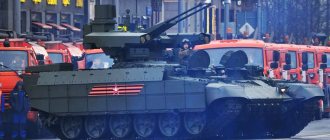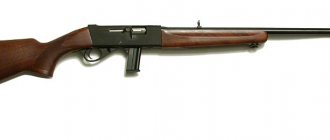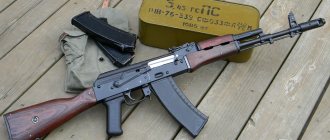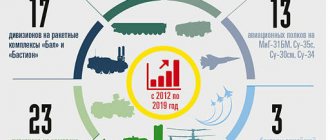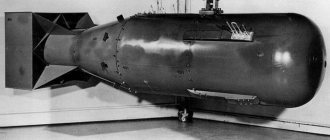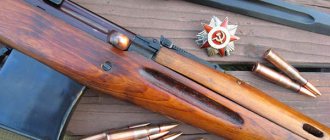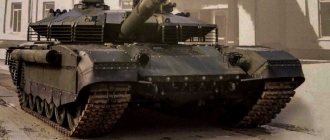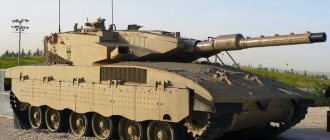Russia vs. NATO: Balance of power over 30 years
The production and use of nuclear weapons as a means of mass destruction in 1945 marked the beginning of a new era when opponents, possessing a similar type of weapon, could destroy not only each other, but also, estimatedly, life on the planet. The conditions of the global confrontation have changed.
The two “chairmen” of the atomic club, the USA and the USSR, no longer fought directly, did not pit millions of soldiers in mortal combat. The opponents worked to undermine each other through the economy, internal contradictions, and on the geopolitical “chessboard” they tried to occupy as many strategically important “cells” of countries as possible, establish loyal regimes there and oust the enemy, they used “proxy” armies and associated organizations. In general, they used hybrid, asymmetrical combat strategies.
The fall of pro-Soviet regimes in Eastern Europe, the unification of Germany, the collapse of the USSR, and the withdrawal of Soviet troops led to a radical change in the geopolitical picture of the world. In Europe alone, Moscow left the territories of seven countries (GDR, Poland, Czechoslovakia, Hungary, Romania, Bulgaria and Yugoslavia) with an area of about 1247 thousand square meters. km. with a population of about 136 million people. The loss of Ukraine, Moldova, Belarus and the Baltic states is the loss of approximately another 1020 thousand square meters. km. and more than 74 million population.
In total, 2,267 thousand square meters left Moscow’s control. km. territory and 210 million population. The deployment border of Russian troops has shifted from 600 (from the GDR to the Kaliningrad region) to 1,500 kilometers to the east. These losses exceeded the result of the Nazi invasion in 1941-1942.
In fact, almost half of the “chessboard” has been cleared in Europe. The resulting voids gradually began to be filled by the forces of the Western military bloc, although the North Atlantic Alliance, at least verbally, promised not to expand to the east.
Back in 1990, East Germany was incorporated into NATO, uniting with Germany. Poland, Hungary and the Czech Republic (a fragment of Czechoslovakia) joined NATO in 1999. In 2004, Slovenia, Slovakia, Lithuania, Latvia, Bulgaria and Romania followed suit.
In 2005, Estonia joined this military-political bloc, and in 2009, Albania and Croatia. In 2022, Montenegro joined NATO, and in 2020, another part of the former Yugoslavia, North Macedonia.
NATO's advance did not end there. The coup d'etat in Ukraine in 2013-2014 threw this country into the pro-Western sphere of influence. Russia managed to reunite with Crimea and supported the Donetsk and Lugansk People's Republics (DPR and LPR).
An attempt at a similar overthrow of power in Belarus in 2020-2021 failed. The seizure of power by pro-Western forces in Minsk would mean a leveling of the front in the west. In this case, the potential enemy would be on the same lines as the Germans in 1943: 500 kilometers from Moscow and 135 kilometers from St. Petersburg.
This is several days of march of mechanized columns, a minute flight time of missiles and aircraft to the vital centers of the country. It is not difficult to imagine the imminent deployment of NATO military bases and a strict economic blockade in the West.
We tried to assess how the disposition of the military forces of Russia and the West has changed over the past 30 years in order to understand the reasons for official Moscow’s concern about NATO’s further offensive in the East and the severity of the ultimatums issued.
Before the collapse of the USSR In 1989, NATO included 16 states (not counting France, which left in 1966 and formally participated in the work of the alliance). The population (with France) exceeded 650 million people.
Almost 6 million people were under arms, armed with more than 17 thousand aircraft, 13 thousand helicopters, over 41 thousand tanks, almost 20 thousand guns, self-propelled guns and MLRS (not counting mortars), more than 2000 warships and submarines of various types (including boats and patrol vessels). These values did not take into account the potential of NATO's possible allies in Europe (Ireland, Austria, Sweden and Finland). They also did not include the forces of US satellites in the Far East (FE): Japan, South Korea, Taiwan, the Philippines, Australia and others.
The lion's share of the listed power - up to 45% of personnel, 65% of aviation, 40% of tanks - fell on the United States. A significant part of the entire NATO potential - up to 60% of all troops, 75-80% of aviation (including air groups of at least two AUG - carrier strike groups - on duty in the North Atlantic), more than half of the tanks - were located in active units and in storage warehouses in Europe.
Thus, the European theater of operations (TVD) was still the main one. The Asia-Pacific region (APR) and the Middle East (ME) were assigned a secondary role. The listed potential could be significantly increased in the event of the introduction of martial law and the transfer of additional reinforcements from overseas.
The USSR and the Warsaw Wars countries could counter this power with over 5.6 million military personnel, 17 thousand airplanes and helicopters, more than 84 thousand tanks, 47 thousand guns, more than 1,600 ships and submarines. Despite the fact that the USSR, a little earlier, unilaterally reduced its armed forces by about 550 thousand people.
Up to 70-80% of these forces were deployed in the direction of the European theater of operations. They stood in several echelons from the GDR to the Urals. Significant Soviet forces were also deployed in the Far East (for example, against China, which was strenuously trying to play the role of a “third force”).
However, the main means of deterrence was nuclear weapons. By 1989, the United States had 22 thousand atomic charges of various powers - despite the fact that, starting in the 70s, America more than halved this arsenal. Great Britain and France had over 500 warheads. The USSR could field more than 10 thousand nuclear weapons.
It is worth noting that only strategic atomic munitions (on strategic carriers) are listed. In addition, their real number could be even higher than the official one (the objective picture was not made public for reasons of secrecy).
The parties also owned a huge amount of tactical nuclear weapons (TNW). Its quantity was not given to calculation. For example, in South Korea alone in 1976, the United States had about 10 thousand samples of tactical nuclear weapons.
NATO and Russia. 90s and 2000s The collapse of the USSR in 1991 changed the picture of the world, and military tension decreased. In 1992-1996, the United States alone reduced the size of its army by eight divisions out of 18 - from 786 to 500 thousand troops.
The practice of deployment and duty of American aircraft carrier groups in the North Atlantic and in waters near the Russian Far East has ceased. In 1996, tank production ceased in America. The American army in Europe was reduced from 213 to 95 thousand troops (not counting civilian personnel) with 1,200 tanks and 650 artillery pieces.
The total number of American troops decreased by about a third by the end of the 1990s, the time of the admission of new NATO members (to 1.4 million troops). France, for example, also reduced its armed forces from 450 to 270 thousand officers and soldiers, Great Britain - from 311 to 220 thousand soldiers. In general, by the end of the 1990s, NATO forces were cut to just over 4 million people.
The size of the Russian armed forces from the legacy of 2.9 million military personnel left over from the USSR dropped to 1.2 million officers and soldiers by the end of the 1990s. That is, the personnel potential “on the Russian side” has decreased by almost five times over the decade. The nuclear potential decreased to 6,700 warheads by 2000, more than one and a half times. While the enemy’s numbers were “shrinked” by less than one and a half times, and atomic weapons, officially being reduced, were often simply handed over to warehouses.
In the 90s, the West believed that Russia was conquered and controlled, controlled through the oligarchs, and had finally collapsed into the abyss of socio-economic crisis and depopulation. Therefore, the armies can be reduced, but not advance to the east. There were even attempts to lobby for Russia's entry into NATO. This would mean the placement of foreign bases on the territory of the Russian Federation on legal grounds and, in fact, direct military occupation.
However, in the late 90s, new members were admitted to NATO and over 30 years the number of countries in the bloc has almost doubled, to 30 states, and another 5 participate in the partnership program. In general, the potential of the North Atlantic bloc has increased slightly: by approximately 90 million people and less than half a million military personnel. The main acquisitions were territorial ones. The Western Alliance has advanced many hundreds of kilometers.
The United States, as part of the ongoing reform of its armed forces, has taken the path of creating rapid reaction forces. Troops that can be quickly transferred “light” to secure a bridgehead before the arrival of more “heavy” formations.
Within the framework of this concept, six “striker” brigades appeared, intended to be transferred to any point on the globe within four days. The idea of redeploying no less than 250 thousand officers and soldiers to any area of the planet within a month continued to be finalized. The APS (army prepositional stocks) storage system has been preserved - the presence of huge reserves of weapons and equipment in key regions of the Earth.
Meanwhile, the Russian Armed Forces continued the process of reduction in the early 2000s. And the shortage of personnel reached an average of 30-35%. At the time of the adoption of the “new look” program for the Russian army in 2009, our troops found themselves at an extremely low point in their quantitative potential. Their actual number was reduced to 650 thousand military personnel (mainly due to shortages - formally the number was 1.2 million people). Nuclear forces reached a low point in 2014, when about 2,300 strategic warheads remained in the arsenal.
In 2009-2010, troops underwent even greater reductions. The 20th and 22nd Armies of the Army, as well as the 1st Air Defense Air Force Command, were disbanded. Apparently, the RF Armed Forces at the lowest numerical level did not exceed 600 thousand people (without civilian personnel).
In the central direction, the troops were withdrawn all the way beyond Moscow - to the Nizhny Novgorod region. In fact, in the west of the country there remains a huge forefield of hundreds of kilometers, covered by a weak curtain of individual formations. Belarus as a union state had an army of 65,000. Its aircraft have decreased almost fourfold compared to the early 1990s.
The situation at that time could be characterized as catastrophic. Over 20-25 years, the armed forces of the “eastern bloc” have become almost nine times smaller. Nuclear potential has decreased fivefold. While the enemy strengthened and moved east.
“Munich Speech” and missile defense “Munich Speech” by Vladimir Putin in 2007 was very unexpected for our Western partners, but became a logical reaction to their permissiveness. In addition to the start of NATO expansion, the deployment of the so-called missile defense system began in 2006-2007 - a missile defense system designed to detect, track and intercept ballistic missiles of various classes.
Thus, the States have been forming a national missile defense system (NMD) since 1999. In 2002, the White House unilaterally withdrew from the treaty limiting missile defense systems. In 2004-2007, he strengthened the protection of Alaska. Since 2008, several destroyers have been deployed in the Mediterranean Sea on a rotational basis, serving as elements of the missile defense system. Their number consistently increased from two to seven or eight pennants. Under Barack Obama, the European part of the program was revised. The Czech Republic and Hungary refused to deploy interceptor missiles; only Poland accepted certain elements.
Subsequently, under President Trump (2016-2020), the ideas of deploying missile defense components in various countries close to Russia were again promoted. At the same time, the activity of the American fleet increased, resuming, in particular, naval exercises in the Far East near the coast of Alaska for the first time in almost 30 years. Projects have emerged to deploy short- and medium-range missiles in Poland (up to 5,500 kilometers). This allowed the Americans to cover Russian territory up to and including Western Siberia with a possible missile strike.
The creation of the so-called Space Forces in the United States in December 2022 was interesting. This structure became the successor to the Aerospace Command, formed under Reagan, in 1982. She was responsible for the American satellite constellation, as well as work on the space bomber. While Russia focused on hypersonic and anti-satellite missile weapons, the Pentagon sought to obtain a space bomber to operate from orbit. The implementation of these projects would mean transferring combat operations into space.
The number of Western armed forces also increased. First of all, this concerned the American SOF (special operations forces), which over the course of a decade and a half increased from 20 to 70-80 thousand (excluding civilian personnel). The geography of operations continued to include the entire world.
The balance of power today As of August 2022, the US Armed Forces numbered almost 1.5 million military personnel, not counting civilian personnel. Almost 900 thousand more Americans served in various branches of the reserve branches of the Armed Forces, as well as in the National Guard and Coast Guard. The civilian workforce exceeded 750 thousand employees.
In total - more than 3.1 million people. The approximate scale of mobilization of the Armed Forces Reserve and the National Guard could increase the number of US Armed Forces, according to some data, to 7-8 million people.
They are armed with at least 14 thousand aircraft and helicopters, 490 ships (excluding small ones, such as patrol boats and boats), more than 11 thousand tanks (including those in storage), more than 9 thousand guns and MLRS (excluding mortars). The US remains NATO's main strike force. Their specific share in terms of personnel and conventional weapons and equipment (without nuclear weapons) is, as a rule, from 30 to 60% of the total potential of the alliance forces.
Thus, the potential of NATO forces has changed slightly since 1989. Today there are over 4.5 million personnel (excluding civilian specialists and reservists), and there is a tendency to increase the number. At the same time, more than two-thirds of the bloc’s troops – at the expense of the armies of the US’s European allies – are concentrated in Europe, in the main direction against Russia.
Carrying out mobilization, transferring additional reinforcements from the United States, and withdrawing troops to deployment lines can create overwhelming superiority already in the first line. The approximate scale of creating a front-line strike group within a few months reaches several million people.
Approximately, at least 4-5 million people can be gathered for action on the part of Europe against Russia. And if quantitatively this is comparable to what Hitler’s Germany and its allies threw at the peoples of the USSR in 1941, then qualitatively, due to the exponentially increased firepower and mechanization of troops, this is a tenfold greater military force.
Russian troops in the period 2009-2014 continued to undergo optimization, with some increase in numbers. To a large extent, they were withdrawn beyond Moscow in the western direction. From the point of view of organization and structure, the principle of transition to a brigade structure instead of a divisional one continued to be professed. True, after 2014 the reverse process began.
The coup in Kyiv led to the concentration of Russian troops on the Ukrainian border. In March 2014, they managed to gather only 10 thousand troops. By the end of April, this value increased to 40 thousand. This was not enough for a serious offensive operation to a depth of several hundred kilometers.
However, since 2014, a qualitative and quantitative leap in Russian aircraft has begun. In 2017-2018, their number reached more than 1 million officers and soldiers, with 890 thousand representatives of civilian personnel.
In total - about 1.9 million people with almost 13 thousand tanks (80% in storage), about 4,500 airplanes and helicopters (including those in storage), a significant number of artillery pieces, MLRS and various armored vehicles (not tanks). The stock of strategic atomic charges has reached, according to some sources, 6,400 units. Excluding tactical nuclear weapons and including those charges that are in storage, the latter make up up to 75% of the total arsenal.
The Russian National Guard (Rosgvardia) numbers between 340 and 430 thousand people. However, the main combat-ready forces capable of being used to control occupied territories are not so numerous.
It is worth noting that as of 2022, the Russian troops and reserves have a large number of people who have been in combat zones as part of various formations - the Ministry of Defense (MoD), various special forces and intelligence services, the private military corporation (PMC) Wagner, etc. d. As of August 2018, 63 thousand people passed through Syria alone and along the Ministry of Defense alone. The total number of people with “Syrian” experience” – not just the Ministry of Defense, but everyone – today can range from 120 to 150 thousand people.
The disadvantage of the RF Armed Forces today remains the insufficiently strong ground forces (ground forces) relative to the scale of the country, their limited ability to form powerful strike forces in decisive directions.
The Russian Army today is about 300 thousand military personnel (without civilian specialists) - 11 divisions, a number of other formations. They are supplemented by airborne forces (airborne troops) from the reserve of the High Command - another 45 thousand paratroopers (the basis is four airborne divisions). This, for comparison, is slightly more than the estimated capacity of such a separate and rather small theater of operations as Belarus.
With this, the strong side of the Russian Federation remains their Strategic Missile Forces (strategic missile forces) - 12 divisions - and, in general, nuclear weapons. They are the main guarantor of deterring direct NATO aggression.
Changes on the Western Front in 2022 In the fall of 2022, we are seeing the active deployment of a number of pro-Western military contingents in Eastern Europe. First of all, this applied to Poland, Romania, the Baltic countries and Ukraine.
Until October, Poland had in the east - near the border with Belarus - only one division: the 18th mechanized. Due to the situation due to the conflict with Kurdish refugees from Syria and Iraq, parts of two more divisions were successively transferred here: the 12th mechanized from the north-west, from near Szczecin, from the border with Germany, and the 16th mechanized from the border with Kaliningrad region.
In fact, out of four Polish ground divisions, elements of three turned out to be assembled in a narrow patch opposite the Belarusian Brest. The fourth, 11th Panzer Division remained in the south-west of Poland, in Zagan, also near the border with Germany, apparently in reserve.
These forces, gathered against Belarus, were supplemented by formations of the Air Force, special forces, internal troops and border guards. The estimated potential of the group reached 90-100 thousand people with several hundred tanks, a solid aviation force, as well as several hundred artillery guns and self-propelled guns. These forces were supplemented by detachments from the USA, Germany and Great Britain, capable of becoming the basis for the deployment of larger formations.
The arrival of the 11th Panzer Division in the concentration area from near Zagan could mean that almost all possible available Polish forces were thrown east, onto a narrow area of contact with Belarus. At the same time, other borders - even with the Kaliningrad region - are completely exposed.
It is worth noting that, starting in 2022, Poland began a program to actively increase the potential of its armed forces. Thus, the total number of troops by 2022 was to be increased from 114 to 160 thousand military personnel. And the territorial militia - from 29 to 35 thousand people.
According to some reports, the Polish leadership is seeking to increase its armed forces to 300 thousand officers and soldiers - this is the number of Polish troops in the 1980s. Including 250 thousand fighters were supposed to be in the regular army and 50 thousand militias in territorial structures.
Belarusian leader Alexander Lukashenko responded to these actions by deploying one additional motorized rifle brigade (MSBR) of the second stage to the ten already available. This resulted in an increase in the number of Belarusian armed forces by approximately 5 thousand troops, from 65 to 70 thousand military personnel. In total, in the event of martial law, it was planned to put seven brigades of the second stage under arms, bringing all units to wartime levels, and also to field a 120,000-strong Belarusian territorial militia.
The deployment of Ukrainian troops in Donbass has also intensified. In 2019-2020, the Armed Forces of Ukraine had about 10 ground brigade/regimental groups (a quarter of the ground forces) in the Joint Forces Operation (JFO) zone. By 2022, this value has increased to 13 brigade/regimental groups (already a third).
At the end of November 2022, Foreign Ministry representative Maria Zakharova announced the presence of a 125,000-strong Ukrainian Armed Forces army in the Donbass. This meant the concentration of at least half of the units and formations of the Ukrainian Armed Forces here. If this information is reliable, together with departmental formations (for example, the National Guard of Ukraine, NSU), as well as various types of civilian personnel, at least 150 thousand people from the Ukrainian military and paramilitary forces may be in the JFO area.
Also, since the beginning of December 2022, an operational group of the General Staff of the Armed Forces of Ukraine has been deployed in Donbass - for the first time since February 2015, when the last round of large-scale hostilities ended.
In addition, at the end of November 2022, there were, according to some sources, over 12 thousand foreign military personnel (a third were American) on the territory of Ukraine. For 2022, it was announced that 11.5 thousand foreign military personnel would be involved in 10 different exercises in Ukraine.
Romania also conducted a series of exercises on the Danube and the Black Sea together with partners in the bloc and with Ukrainian troops. In addition, a pro-Western candidate won in Moldova. The target of the 65,000-strong Romanian Armed Forces is the Pridnestrovian-Moldavian Republic (PMR).
Since the beginning of 2022, Russia has responded to such a strengthening by moving significant mechanized groups to the border with Ukraine. Since April 2022, at least three such “approaches” have been carried out: in April, July and November. Western estimates indicate the presence of 90 to 120 thousand Russian troops in the Ukrainian direction. (The realism of these estimates is a separate issue. For example, in April 2022, the grouping of Russian troops on the border increased approximately by 20-25%).
The Little Entente The configuration of the disposition of forces of potential opponents is as follows: if we imagine a hypothetical advance of the armies of Russia and Belarus onto Ukrainian territory, then Polish troops, together with allied contingents, will be able to deliver a direct blow to the flank and rear of the forces that have left for Ukraine - to Minsk and towards the units advanced in the second echelon and formations of the 1st Russian Guards Tank Army (especially since the distances there are small).
Other military-force provocations at the borders are also possible. Thus, Ukraine, Romania, the Baltic states and Poland become “primer-victims”, to whose protection other, more serious players in the Western world will be drawn, stipulating their participation in proportion to the degree of risk, having weighed all the pros and cons. The reaction of the Russian authorities will be decisive in this case. Any slack will only increase Western participation in the supposed measured conflict.
Thus, the concept of the “Little Entente” of the 1920s was essentially revived.
Ahead is the echelon of Eastern European countries with a total military potential of less than a million people in the event of the introduction of martial law and general mobilization. It is supported by the forces of more powerful NATO countries, introduced in doses.
The greatest danger in the battle for the “squares” of the countries on the “chessboard” will be the possibility of the West using all its numerous aircraft in the skies over the host countries being sacrificed and establishing a no-fly zone. Western air forces - primarily American - today, unfortunately, are many times superior to Russian ones.
The question is the scale of the potential conflict. Will this be a regional test, or will the fire of war flare up into something bigger? By the way, the Little Entente finally collapsed in 1938 due to the division of Czechoslovakia as a result of the Munich Treaty between Germany, Great Britain, France and Italy. Interesting historical analogies.
Conclusions 1. The collapse of the USSR, the collapse of the Warsaw Department of Internal Affairs, and NATO’s advance to the east became the greatest geopolitical catastrophe of the 20th century. Over the short third of a century, the military potential of Russia and its European allies (without nuclear weapons) has decreased by six times (not counting civilian personnel). The country's nuclear arsenal has decreased by three and a half times. The enemy advanced 600-1500 kilometers to the east without a fight. The deployment of missiles and strike aircraft in Poland will reduce the flight time to Moscow and St. Petersburg to less than an hour and a half, in the Baltic states and Ukraine - to less than an hour (to St. Petersburg from Estonia - to minutes). At the same time, the speed of invasion of mechanized columns from the territory of Ukraine and the Baltic states in the event of a concentration of NATO forces there, with access to the St. Petersburg-Moscow-Volgograd line, is reduced to 1-10 days.
2. NATO's potential has decreased slightly over 30 years. A significant part of the Alliance's forces are still stationed in Europe - in the direction of the main attack against Russia. The relatively small (several tens of thousands of officers and soldiers) US contingent in Europe should not be misleading. It can be rapidly built up to a front-line group within three to four months. At the same time, numerous armies of US allies, built in several echelons, will serve as cover forces for the promising American deployment.
3. Since 2014, the Russian Federation has somewhat restored its military potential. The size of the Armed Forces (without civilian personnel) has been increased by one and a half times, the number of strategic nuclear weapons has been tripled. The presence of hypersonic weapons is declared, capable of easily overcoming the missile defense barrier being intensively created by the United States. According to some calculations, Russia and the United States each have about a hundred targets for a promising nuclear attack, and, if several charges are used per target, several hundred atomic strikes are enough.
4. Nevertheless, the situation remains threatening. To ensure maximum security, it is necessary to reach the former western borders of the USSR and restore the vast foreland in front of Moscow and St. Petersburg. This is a matter of strategic security and survival. Moreover, the Western (European) theater of operations is still the main one for NATO countries, which conduct dozens of complex military exercises annually and have a well-functioning infrastructure for the operations of large masses of troops.
5. In addition, the line of the former USSR border in the west, minus the land border with Finland, is the most convenient position for defense against Europe, since it runs along a narrow “isthmus” between the Baltic and Black Seas. Here is the shortest front for military operations. To the east and west are the “bells” of expansions of continental territories.
6. The scale of actions in the event of an acute phase of the crisis is expected to be front-line, even during operations on the territory of neighboring states, such as Ukraine. The issues of all levels of military art, the prospects for making up for losses, and above all damage to military equipment, the potential of the military industry and the economy as a whole are again relevant.
Ilya Topchiy
Don't forget to share the news on your social media pages below.
NATO Secretary General: The Alliance always stands in defense of its allies
Exercise Neptune Strike highlights transatlantic unity, said NATO Secretary General Jens Stoltenberg. The Alliance will always do whatever is necessary to protect its allies, he added.
In early March, NATO will hold Cold Response military exercises in the Arctic Circle with the participation of 35 thousand troops from 28 countries.
Tensions between Western countries and Russia have risen in recent months. The Russian Federation deployed about 100 thousand military personnel to the annexed Crimea and to the border with Ukraine, explaining this by military exercises. Western leaders fear Moscow is preparing for war, but the Kremlin denies plans for such an operation.
Latvia will spend on defense
In the fall, military exercises took place in various parts of Latvia, including the joint “Silver Arrow” maneuvers of NATO military personnel. In the photo: Latvian Defense Minister Raimonds Bergmanis (center) and US military personnel after military exercises in the Latvian town of Adazi. Bergmanis can expect defense spending to increase by almost 100 million euros in 2022.
